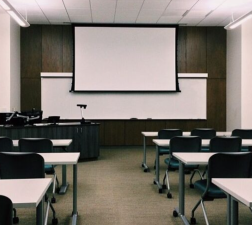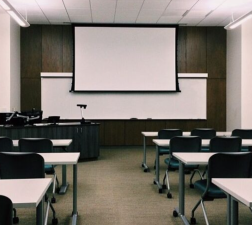Data statistics crisis: credibility collapse and institutional defects
Data statistics crisis: credibility collapse and institutional defects
In January 2024, the National Student Clearinghouse Research Center (NSCRC) in the United States caused an uproar by releasing inconsistent enrollment data. In October 2023, the agency announced that the enrollment rate of freshmen in the fall fell by 5%, but in January 2024, it revised it to an increase of 5.5%, with an error of up to 10.5 percentage points. This blunder exposed the deep-seated problems of the US education statistics system: methodological loopholes, lack of supervision and profit-driven. NSCRC admitted that it had misclassified some freshmen as dual-enrollment students, resulting in statistical distortion. Such errors are not isolated cases. In October 2023, the preliminary data released by the agency also had a 4.4% deviation from the final results.

The credibility crisis of US education data stems from institutional defects. The federal government relies on non-profit organizations (such as NSC) rather than national statistical systems, resulting in delayed data integration and lack of accountability. After the revision of the Higher Education Act in 2008, the national student statistics system was banned due to privacy disputes, further exacerbating data fragmentation. This confusion not only affects policy making, but also leads to a sharp decline in public trust in educational institutions. Dominique Baker, a professor at the University of Delaware, pointed out: "If the United States had a unified statistical system similar to other developed countries, such problems could have been avoided."
Policy swings: the game between federal and state powers
Education policy has become a battlefield for political struggles. After the Trump administration restarted, the Department of Education faced the risk of being abolished. Republican Senator Mike Rounds proposed a bill to close the Department of Education, intending to delegate power to the states. This move may impact key areas such as federal financial aid, student loan policies, and the rights of transgender athletes. For example, the New York State education community is deeply concerned about federal funding cuts, especially the "Title I" funds for low-income students, which may be converted into education vouchers and gradually eliminated.
State-level policies are also controversial. New York Governor Hochul promoted a statewide campus mobile phone ban to address the negative impact of social media on students' mental health, but the specific implementation details have not yet been clarified. At the same time, the diversity, equity and inclusion (DEI) plans of colleges and universities in many states have been suppressed by conservative forces. In 2024, dozens of universities have closed DEI offices or implemented "ideological neutrality" policies. This politicization has exacerbated the cultural division on campus, as evidenced by the frequent protests related to the Israeli-Palestinian conflict.
Technology penetration: AI reshapes the education ecosystem
Artificial intelligence is deeply involved in the American education scene. The University of California, Los Angeles uses AI tools for medieval literature courses to generate customized teaching materials; the University of Michigan requires all graduates to take AI core courses. Technological innovation has a dual effect: on the one hand, AI improves teaching efficiency and personalized learning experience; on the other hand, academic integrity issues have surged, and students have repeatedly abused AI to generate papers or problem-solving tools.
Behind the technological advantage lies talent dependence. According to a study by the Macropolo think tank, 38% of researchers in the field of AI in the United States graduated from Chinese universities, exceeding the 37% of local training. Although 80% of foreign talents who have obtained doctoral degrees in the United States choose to stay in the United States, geopolitical tensions may threaten this talent pipeline. In addition, the Department of Government Efficiency (DOGE) led by Musk used AI to analyze sensitive data of the Ministry of Education, sparking controversy over privacy leaks and highlighting the imbalance between technology application and ethical supervision.
Fairness dilemma: resource differentiation and ethnic differences

The issue of educational equity in the United States is still shocking. Among public school students in 2022, whites accounted for 44.5%, Hispanics 29%, blacks 14.9%, and Asians 5.4%, while the high school graduation rate of Native Americans was only 74%, significantly lower than the 94% of Asians. This gap is closely related to resource allocation: the average number of students in suburban public schools (657) far exceeds that in rural areas (354), and 43% of students in private schools are concentrated in cities. The New York State school funding formula uses the 2000 poverty data, resulting in long-term underfunding of low-income school districts.
The phenomenon of class solidification in higher education is equally severe. The enrollment rate of freshmen in four-year public universities where Pell Grant recipients are concentrated has dropped by 10.4%, reflecting the shift of low-income families to cheaper community colleges. However, top universities are still dominated by the elite class. The number of international students in 2024 reached a record high, but their high tuition fees exclude most middle-class families.
Globalization and identity: international education and immigration dilemma
The global role of American higher education faces challenges. Although the number of international students reached a new high in 2024, the "enrollment cliff" is looming - demographic changes and increased price sensitivity may cause a decline in enrollment rates in the future. The educational choices of Chinese families reflect cultural conflicts: the Confucian tradition emphasizes academic achievement, leading to intergenerational conflicts and mental health problems, while local American education focuses more on interest cultivation and social responsibility. At the same time, the controversy over fairness in Asian admissions and the "chilling effect" continue to ferment, further complicating the ethnic education ecology.
Fluctuations in immigration policies also affect the education system. The Trump administration plans to increase deportation efforts, which may affect tens of thousands of immigrant students in New York City. Among Chinese students studying in the United States, the proportion of graduates from top universities who stay in the United States remains high, exacerbating the loss of talent from developing countries.
Transformation Path: Reconstructing Trust and Innovation Collaboration
Faced with multiple challenges, American education urgently needs systematic reform:
- Data transparency: Establish a national education statistics system, strengthen third-party audits and public supervision;
- Policy stability: Balance federal and state power to prevent education from becoming a bargaining chip in political games;
- Technology ethics framework: Formulate AI education application standards to prevent academic misconduct and data abuse;
- Resource redistribution: Update the funding formula to give priority to low-income school districts and ethnic minorities;
- Global cooperation: Optimize international student policies to promote talent circulation rather than a one-way flow.
